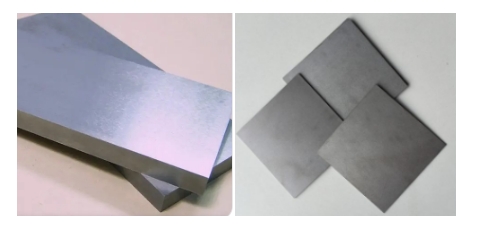- 18
- Dec
モリブデンランタン合金の特性:モリブデンランタン(Mo-La)合金とTZMモリブデン合金の違いは何ですか?
モリブデンランタン合金の特性:モリブデンランタン(Mo-La)合金とTZMモリブデン合金の違いは何ですか?

モリブデンランタン(Mo-La)合金とTZMモリブデン合金の違いは何ですか?
モリブデン-ランタン合金とは何ですか? モリブデン-ランタン合金は、母材のモリブデンと三酸化ランタンがマトリックス中に分散粒子として存在する合金です。 合金中のLa2O3の含有量は、一般に0.5%〜5.0%(質量分率)です。 に
1000〜1800℃でのモリブデン-ランタン合金とTZM合金の高温性能と対応する構造の研究を通して。 結果は、温度が1400℃より低い場合、モリブデン-ランタン合金は強度と可塑性のより高い総合性能を持っていることを示しています。 温度が1400℃以上になると、モリブデン-ランタン合金の引張強度が低下し、モリブデン-ランタン合金の塑性も低下します。 試験温度の上昇に伴い、TZM合金の引張強度は低下しますが、TZMモリブデン合金の塑性は増加します。これは、モリブデン-ランタン合金とは正反対です。
同時に、強度であろうと可塑性であろうと、TZM合金は同じ温度のモリブデン-ランタン合金と比較されます。 微細構造の観察により、これら1100つのモリブデン合金は1550℃で再結晶を開始し、XNUMX℃まで継続し、それらの再結晶粒は細長い構造を示します。これは、純モリブデンの再結晶状態の等軸結晶粒とは異なります。
1. Introduction to molybdenum lanthanum alloy
Molybdenum lanthanum alloy, also known as high temperature molybdenum, brand MoLa, is made of molybdenum doped with a small amount of lanthanum trioxide (La2O3) particles to form a so-called laminated fiber structure. This special microstructure can remain stable even at temperatures as high as 2000°C. Therefore, molybdenum-lanthanum oxide has creep resistance even under extreme conditions of use. We mainly process such molybdenum alloys into high-temperature furnace parts, such as vacuum furnace heat shields, sintering and annealing boats, stranded wires or evaporator coils.
2.モリブデンランタン合金の利点:
より高い再結晶温度;
細長い粒子構造は延性を向上させることができます。
より強い耐酸化性;
より高い耐クリープ性。
3.再結晶温度:1400℃〜1500℃。
4.モリブデン-ランタン合金の抵抗率(単位:Ω* mm2 / m)
| 温度℃ | 20 | 600 | 1000 | 1200 | 1400 | 1700 | 1800 | 1900 | 2000 |
| 抵抗率 | 0.054 | 0.205 | 0.314 | 0.374 | 0.435 | 0.506 | 0.525 | 0.558 | 0.571 |
5、モリブデンランタン合金組成
| グレード | 主成分% | (%以下) | |||||||||
| Mo | Ti | Zr | C | La2O3 | C | 0 | N | Fe | Ni | Si | |
| Mo1 | マージン | – | – | – | – | 0.01 | 0.007 | 0.002 | 0.01 | 0.002 | 0.01 |
| TZM | マージン | 0.40〜0.55 | 0.06〜0.12 | 0.01〜0.04 | – | – | 0.03 | 0.002 | 0.01 | 0.005 | 0.005 |
| MoLa | マージン | – | – | – | 0.4〜1.2 | 0.01 | – | 0.002 | 0.01 | 0.002 | 0.01 |
6、モリブデン-ランタン合金の推奨表面荷重:4〜9W / cm2
